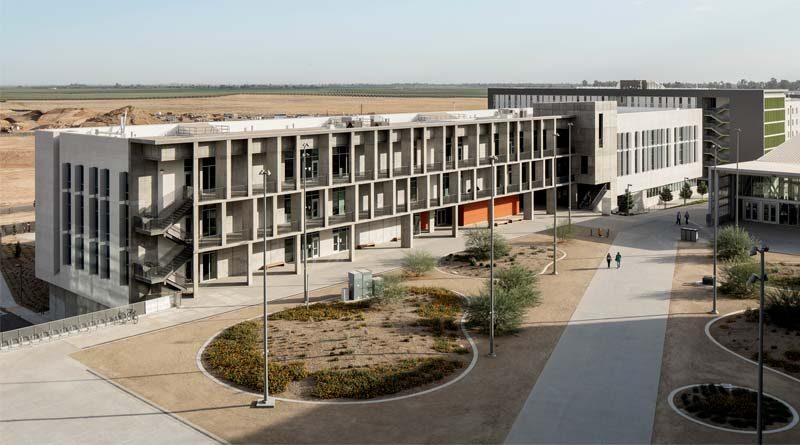California Arts and Sciences Building Awarded LEED Platinum Certification
By Lisa Kopochinski
MERCED, Calif.—The new $60 million Arts and Computational Sciences building at UC Merced—spanning 90,000 square feet—was completed last August following a four-year design and construction schedule using the Public Private Partnership delivery model.
The scale of this P3 delivery model sponsors a holistic, systems-thinking approach to campus development rooted in efficiency, innovation, flexibility and sustainability. The P3 development team included a consortium of financial experts, contractors, operations and maintenance teams, architects, engineers, and consultants, with WRNS Studio serving as academic architect. Webcor was the general contractor.
The UC Merced 2020 Project was planned to support the college’s Triple Net Zero Commitment (zero net energy, zero landfill waste, and zero net greenhouse gas emissions),” said Kristen DiStefano, associate director, San Francisco Studio, Atelier Ten, the environmental design consultant firm on this project.
This commitment was integral to the design approach, putting a fine point on the ways in which a complicated, large-scale P3 can enhance campus life. This project has a goal of offering students an engaging, inclusive campus experience that supports evolving learning modalities with a variety of flexible, mixed-use spaces that blend student life with education.
The entire development is comprised of several buildings, which represents 1.2 million new square feet of construction.
“Live/Learn” became a guiding theme in the planning and design of the Arts and Computational Sciences Building, which includes computational labs, administrative workspaces, dance studios, painting workshops, screening rooms, informal indoor/outdoor spaces, music and sound recording rooms, and a large 299-seat auditorium and lecture hall serving campus-wide events.
“An integrated design approach connects this varied program, incorporates sustainability goals, and blends living with learning,” explained Lillian Asperin, partner, WRNS Studio.
Added Bryan Shiles, partner, WRNS Studio, “Colloquy spaces distributed throughout the building act as a social glue, encouraging students to gather, socialize, relax and study in a series of informal, comfortable lounges.”
The building also links a new academic quad with future housing and extends a primary circulation path through the existing and new parts of the campus. Angled cast-in-place concrete columns run along the south side of the building, offering students an outdoor, sheltered gathering space and comfortable transition from the quad to the interior. More active programs, including art studios and the lecture hall, are located on the ground floor encouraging interaction between students, faculty and staff.
The auditorium was crafted by local tradespeople using regional wood species. Modular, offsite fabrication helped achieve technical accuracy, as well as cost and schedule efficiencies. Views of both the immediate campus and the open landscape connect students with Merced’s distinct agrarian valleys. Daylight and views reach into all spaces, including the computational labs, achieved through internal glazing and thoughtful space planning. All spaces are flexible for multiple uses—now and into the future.

